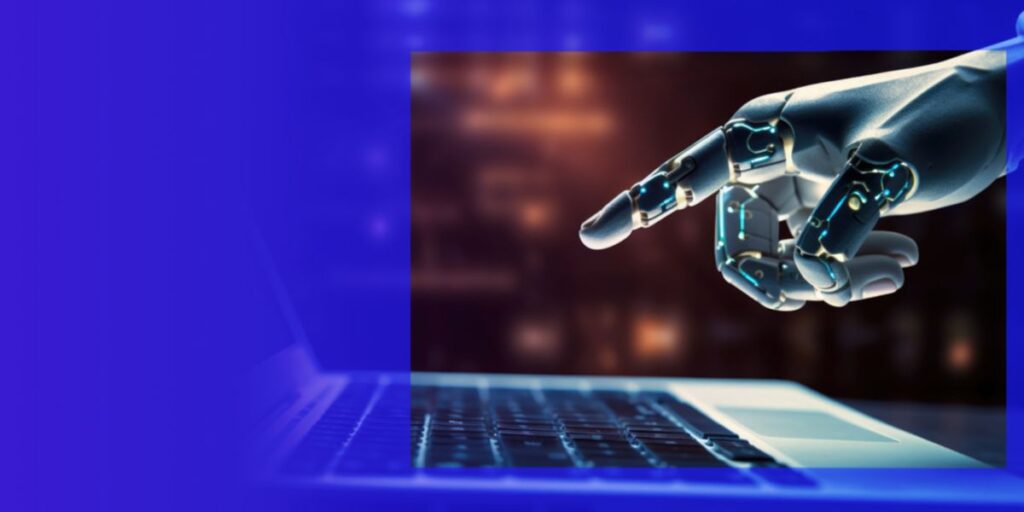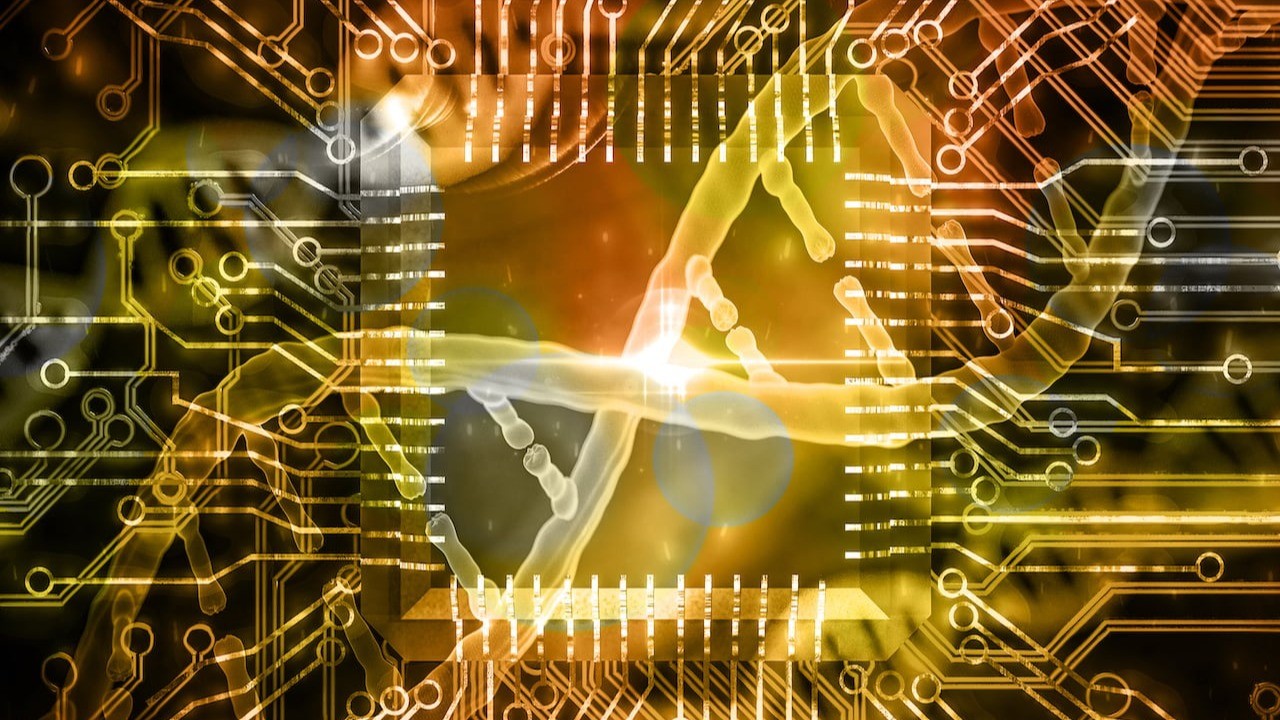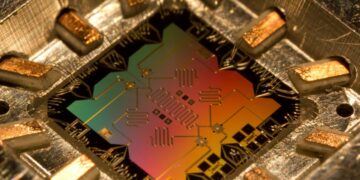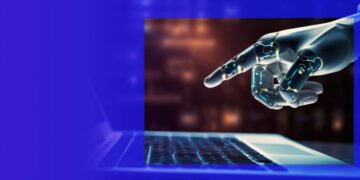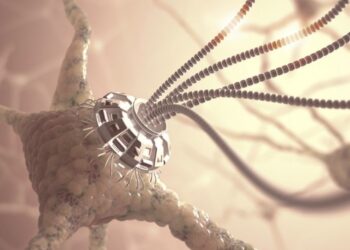At the vanguard of this technological renaissance stands Artificial Intelligence (AI), a field that has moved from theoretical discussions to practical, pervasive applications. Its subset, Machine Learning (ML), is already an integral part of our lives, influencing everything from personalized content recommendations to advanced medical diagnostics. The future of AI promises even deeper integration, fundamentally altering how we work, interact, and perceive the digital and physical realms.
A. Deep Learning’s Evolution and Neural Networks: The core of modern AI, deep learning, leverages intricate neural networks designed to mimic the human brain’s architecture. Future advancements will feature more sophisticated architectures, enabling machines to grasp nuanced contexts, generate creative content, and make decisions with unparalleled accuracy. This will lead to highly intelligent virtual assistants, autonomous systems capable of intricate problem-solving, and AI-driven scientific discovery that accelerates research across diverse fields. Imagine AI writing compelling narratives or composing complex musical pieces, pushing the boundaries of creative expression.
B. Reinforcement Learning and Autonomous Systems’ Autonomy: Reinforcement learning, where AI learns through iterative interaction with its environment, is propelling the development of truly autonomous systems. Picture self-driving vehicles navigating complex urban environments with human-like predictive capabilities, robotic surgeons performing delicate operations with microscopic precision, or intelligent drones managing vast agricultural landscapes with optimal resource allocation. These systems will not only dramatically enhance efficiency but also improve safety in hazardous environments and open up entirely new economic sectors.
C. Ethical AI and Explainable AI (XAI) Imperatives: As AI’s capabilities expand, the need for ethical frameworks and transparency becomes paramount. Explainable AI (XAI) is a crucial research area focused on making AI’s decision-making processes transparent and understandable to humans, fostering trust and accountability. The coming years will see the establishment of robust ethical guidelines for AI development, ensuring these powerful technologies are deployed responsibly and for the collective good, addressing critical concerns such as algorithmic bias, data privacy, and the impact on employment.
D. AI’s Revolution in Healthcare and Biomedical Science: AI’s transformative potential in healthcare is immense. From accelerating drug discovery cycles and personalizing treatment plans based on an individual’s unique genetic profile to enabling early disease detection and facilitating robotic-assisted surgeries, AI is poised to revolutionize medical practice. Predictive analytics will help anticipate disease outbreaks, and AI-powered diagnostic tools will provide more accurate and timely diagnoses, leading to superior patient outcomes and more efficient healthcare delivery systems globally.
E. AI-Enhanced Education and Tailored Learning Experiences: AI will personalize education on an unprecedented scale, adapting curricula, content, and teaching methodologies to individual student needs and learning preferences. AI tutors will provide customized support, addressing specific learning gaps, while AI-powered analytics will identify optimal learning pathways and enhance engagement. This will cultivate a more effective and empowering educational environment, preparing individuals with essential skills for a rapidly evolving future.
The Immersive Realms of Extended Reality (XR)
Extended Reality (XR), an encompassing term for Virtual Reality (VR), Augmented Reality (AR), and Mixed Reality (MR), is set to revolutionize human-computer interaction and our engagement with digital content. Beyond its entertainment applications, XR holds the key to highly realistic training, distributed collaborative work, and entirely new forms of artistic and social expression.
A. Virtual Reality (VR) for Advanced Training and Simulation: VR will transcend gaming to become an indispensable tool for highly immersive and realistic training and simulation across critical sectors like medicine, aviation, and engineering. Surgeons will hone complex procedures in a risk-free virtual environment, pilots will practice navigating diverse weather scenarios, and engineers will collaboratively design and test prototypes in virtual spaces, significantly reducing costs and accelerating skill development.
B. Augmented Reality (AR) Integrated into Daily Life: AR, which overlays digital information onto the real world, will become seamlessly integrated into our everyday experiences. Envision smart glasses providing real-time navigation overlays, displaying dynamic product information in retail environments, or offering interactive contextual information for educational purposes during a historical tour. AR will transform retail, tourism, navigation, and even social interactions, blurring the distinction between the physical and digital.
C. Mixed Reality (MR) for Dynamic Collaboration and Design: Mixed Reality, enabling real-time interaction with virtual objects within the physical environment, will revolutionize collaborative workflows and design processes. Engineers located in different continents will be able to co-design intricate 3D models within a shared virtual workspace, architects will conduct virtual walk-throughs of buildings on actual construction sites before groundbreaking, and educators will create interactive learning experiences that blend physical and digital elements seamlessly.
D. Haptic Feedback and Multi-Sensory XR Immersion: The future of XR will extend beyond visual and auditory experiences. Significant advancements in haptic feedback technology will allow users to “feel” virtual objects with unprecedented realism, while the integration of sophisticated scent and even taste technologies will create truly multi-sensory immersive environments, making virtual worlds indistinguishable from reality in some aspects.
E. The Metaverse: Persistent and Interconnected Virtual Worlds: The ambitious concept of the Metaverse, a persistent, interconnected network of virtual worlds, will likely be powered by advanced XR technologies. This expansive digital universe will unlock novel avenues for social connection, commerce, entertainment, education, and remote work, potentially creating a parallel digital economy and an evolving digital society with its own unique dynamics.
The Quantum Leap in Computation: Quantum Computing
Quantum Computing represents a fundamental shift in computational power, leveraging the principles of quantum mechanics to solve problems that are currently intractable for even the most powerful classical supercomputers. While still in its early developmental stages, its potential impact is nothing short of revolutionary.
A. Tackling Intractable Computational Challenges: Quantum computers will possess the capability to solve highly complex optimization problems, accurately simulate molecular interactions for advanced drug discovery, and effectively break many of our current, widely used encryption standards. This will dramatically accelerate scientific research across a vast spectrum of disciplines, from advanced materials science to complex financial modeling and climate simulation.
B. Transformative Impact on Drug Discovery and Materials Science: The unparalleled ability of quantum computers to precisely simulate molecular behavior at an atomic level will revolutionize the entire drug discovery pipeline, leading to the development of highly effective and truly personalized medicines. In materials science, it will enable the bespoke design of novel materials with extraordinary properties, from room-temperature superconductors to highly efficient catalysts and advanced composite structures.
C. Revolutionizing Cryptography and Cybersecurity Paradigms: Quantum computing poses a significant, existential threat to existing classical encryption methods, necessitating the urgent development and widespread adoption of quantum-resistant cryptography. Simultaneously, quantum cryptography itself offers inherently secure communication channels, ushering in a new era of unhackable cybersecurity that relies on the fundamental laws of physics.
D. Enhanced Financial Modeling and Optimization Strategies: Quantum algorithms will significantly enhance the sophistication and accuracy of financial modeling, enabling more precise risk assessment, optimal portfolio management strategies, and highly effective real-time fraud detection. This will lead to more stable, resilient, and efficient global financial markets.
E. Significant Challenges and Remaining Roadblocks: Despite its immense promise, quantum computing faces formidable challenges. These include maintaining qubit coherence for extended periods, developing robust error correction mechanisms, and achieving scalability to build powerful, fault-tolerant quantum machines. The engineering and stability of practical, accessible quantum hardware remain significant hurdles for widespread adoption.
The Genomic Revolution and Advanced Biotechnology
Biotechnology is advancing at an astonishing rate, granting us the unprecedented ability to manipulate life at its most fundamental level – the genome. The implications for human health, sustainable agriculture, and environmental remediation are profound and far-reaching.
A. CRISPR-Cas9: Precision Gene Editing: CRISPR-Cas9, a revolutionary gene-editing tool, enables precise and targeted modifications to DNA sequences. This technology holds immense promise for correcting genetic diseases, developing highly disease-resistant crops that require less pesticide, and even potentially enhancing desirable human traits, while also raising complex and critical ethical considerations that demand careful societal deliberation.
B. Personalized Medicine and Pharmacogenomics Tailoring: Breakthroughs in genomics will usher in an era of truly personalized medicine, where medical treatments are meticulously tailored to an individual’s unique genetic makeup and biological responses. Pharmacogenomics will predict with high accuracy how a patient will respond to specific drugs, optimizing dosages, minimizing adverse reactions, and maximizing therapeutic efficacy.
C. Synthetic Biology and Sustainable Bio-Manufacturing: Synthetic biology involves the rational design and construction of new biological parts, devices, and systems, or the rational redesign of existing natural biological systems for specific purposes. This field will enable the bio-manufacturing of highly sustainable fuels, biodegradable plastics, and novel biomaterials, offering environmentally superior alternatives to traditional industrial processes and reducing our reliance on fossil fuels.
D. Regenerative Medicine and Advanced Tissue Engineering: Regenerative medicine aims to replace or regenerate damaged human cells, tissues, or entire organs to restore or establish normal biological function. Groundbreaking advances in tissue engineering will allow for the laboratory-grown creation of complex organs for transplantation, offering a beacon of hope to millions worldwide who are currently on waiting lists for organ donations.
E. Profound Ethical and Societal Implications: The unprecedented power to manipulate life at its core raises profound ethical questions concerning “designer babies,” the potential for genetic discrimination, and the possibility of unintended long-term consequences. Rigorous ethical debate, comprehensive public engagement, and robust international regulatory frameworks will be absolutely essential to ensure the responsible and equitable development and deployment of these powerful technologies.
Pioneering Sustainable Technologies and Renewable Energy

Addressing the global climate crisis and ensuring a truly sustainable future are among humanity’s most pressing challenges. Future technologies will play an absolutely critical role in accelerating the transition to a clean energy economy and dramatically mitigating our environmental footprint.
A. Next-Generation Renewable Energy Sources: Beyond the established solar and wind power, future renewable energy sources will include highly efficient and flexible perovskite solar cells, advanced geothermal systems tapping into Earth’s heat, and potentially even breakthroughs in controlled nuclear fusion power, offering a vision of virtually limitless, clean energy.
B. Transformative Energy Storage Solutions: The inherent intermittency of many renewable energy sources necessitates highly robust and scalable energy storage solutions. Future innovations in advanced battery technology (e.g., solid-state batteries, flow batteries), highly efficient hydrogen fuel cells, and grid-scale energy storage solutions (e.g., pumped hydro, compressed air energy storage) will ensure a reliable and consistent power supply, enabling a truly green grid.
C. Carbon Capture, Utilization, and Storage (CCUS): Technologies for directly capturing carbon dioxide from the atmosphere or from large industrial emissions sources, and either permanently storing it or converting it into valuable products, will be absolutely crucial for effectively mitigating climate change and achieving ambitious net-zero emission targets globally.
D. Circular Economy Principles and Waste-to-Energy Innovations: The fundamental principles of a circular economy, where waste is minimized and resources are endlessly reused and recycled, will be driven by advanced recycling technologies, biological digestion processes for energy generation from organic waste, and innovative materials science that allows for the creation of truly infinitely recyclable products.
E. Sustainable Agriculture and Future Food Production Systems: Innovations such as vertical farming in controlled environments, precision agriculture utilizing AI and IoT sensors for optimized resource use, and the development of lab-grown or cultivated meat will fundamentally revolutionize food production. These advancements will significantly reduce land and water usage, enhance food security, and minimize the environmental impact of feeding a growing global population.
The Evolution of Robotics and Advanced Automation
Robotics is rapidly evolving beyond the confined environments of industrial manufacturing, with future robots becoming increasingly adaptable, intelligent, and capable of operating autonomously in complex, unstructured environments, impacting everything from logistics to personalized assistance.
A. Collaborative Robots (Cobots): Cobots are specifically designed to work safely and intuitively alongside human operators, augmenting human capabilities rather than replacing them. They will become increasingly prevalent in lean manufacturing, delicate healthcare procedures, and complex logistics operations, significantly improving efficiency, enhancing precision, and reducing physical strain on human workers.
B. Service Robots and Enhanced Human-Robot Interaction: Service robots will become an increasingly common sight in homes, hospitals, retail establishments, and public spaces, assisting with a wide range of tasks from domestic cleaning and elder care to autonomous delivery of goods and patient support. Significant advancements in human-robot interaction (HRI) will make these interactions more intuitive, natural, and seamless, fostering greater acceptance and utility.
C. Autonomous Mobile Robots (AMRs) for Dynamic Environments: Autonomous Mobile Robots (AMRs), capable of navigating and performing tasks independently in dynamic and unpredictable environments, will revolutionize warehousing operations, last-mile delivery logistics, and inspection tasks in hazardous or inaccessible environments, leading to profound operational efficiencies and enhanced safety.
D. Soft Robotics and Bio-Inspired Robotic Design: Soft robotics, utilizing compliant and deformable materials, will lead to the development of robots that are inherently safer, more adaptable to irregular surfaces, and capable of extremely delicate manipulation. Bio-inspired robotics, drawing design and movement inspiration from natural organisms, will create robots with unprecedented agility, dexterity, and resilience in complex terrains.
E. Robotics in Extreme Environments: Space and Beyond: Robots will play an increasingly critical and indispensable role in future space exploration missions, performing tasks too dangerous, complex, or tedious for human astronauts. They will also be deployed in hazardous terrestrial environments, such as disaster zones, nuclear facilities, and deep-sea exploration, significantly enhancing human safety and extending our reach.
The Fabric of Connectivity: 5G, 6G, and Ubiquitous Networks
High-speed, ultra-low-latency connectivity forms the fundamental backbone for many of these future technologies, enabling seamless, real-time communication between billions of devices, people, and complex autonomous systems.
A. 5G’s Capabilities and the Rise of Edge Computing: 5G technology delivers unprecedented speeds and extremely low latency, enabling real-time data processing closer to the source through edge computing. This is absolutely crucial for the safe and efficient operation of autonomous vehicles, the seamless deployment of massive IoT applications, and truly immersive Extended Reality (XR) experiences.
B. The Dawn of 6G and Beyond-Next Generation Networks: The ongoing development of 6G will push the boundaries of connectivity even further, promising even higher data transfer rates (terabits per second), near-zero latency, and the integration of sophisticated AI directly into the network architecture itself. This will facilitate truly ubiquitous global connectivity and the seamless, instantaneous operation of highly complex, interconnected autonomous systems.
C. Satellite Internet and Universal Global Coverage: Significant advancements in satellite internet constellations are providing reliable and high-speed internet access to previously unserved and remote areas globally, effectively bridging the persistent digital divide and fostering greater connectivity and economic opportunity for billions.
D. Explosive Growth of the Internet of Things (IoT): The Internet of Things (IoT), a vast network of interconnected physical devices, will expand exponentially, with trillions of sensors and devices continuously collecting, sharing, and analyzing data. This pervasive connectivity will enable the realization of truly smart cities, highly intelligent and resilient infrastructure, and incredibly efficient resource management across all sectors.
E. The Tactile Internet: Real-time Physical Control: The visionary concept of the “tactile internet” refers to ultra-low latency, highly reliable networks that enable real-time, precise control of physical objects and machines over vast distances. This has revolutionary implications for remote surgery, controlling autonomous vehicles from centralized operations centers, and highly responsive industrial automation.
Cybersecurity in a Hyper-Connected, AI-Driven World
As technology advances and global connectivity intensifies, the critical importance of robust and proactive cybersecurity measures becomes absolutely paramount. Protecting sensitive data, vital infrastructure, and individual privacy will remain a continuous, evolving challenge that demands constant innovation.
A. AI-Powered Cybersecurity Defenses: AI will play an increasingly dominant and sophisticated role in detecting and rapidly responding to emerging cyber threats. AI systems will be able to identify subtle anomalies, predict potential attack vectors, and automate defense mechanisms in real-time, offering a proactive shield against malicious actors.
B. Blockchain for Enhanced Security and Trust Paradigms: Blockchain technology, with its inherent immutability, cryptographic security, and decentralized ledger nature, offers remarkably robust solutions for highly secure data storage, verifiable digital identity management, and transparent supply chain tracking, significantly enhancing trust in digital interactions and transactions.
C. The Imperative for Quantum-Resistant Cryptography: The eventual advent of practical quantum computing necessitates the urgent development and widespread adoption of quantum-resistant cryptographic algorithms. These new cryptographic primitives are designed to protect our most sensitive data from future attacks by powerful quantum computers.
D. The Pervasive Adoption of Zero-Trust Architecture: The “zero-trust” security model, which operates on the fundamental principle that no user, device, or application can be implicitly trusted by default, will become the industry standard. This model demands continuous verification and strict authentication for every access attempt, regardless of whether it originates inside or outside the traditional network perimeter.
E. Addressing the Critical Human Factor in Cybersecurity: Despite the incredible technological advancements, the human element remains the most significant and often exploited vulnerability in any security architecture. Continuous, comprehensive education and proactive awareness programs for all users will be absolutely crucial to mitigate risks associated with social engineering, phishing attacks, and accidental human error.
The New Era of Space Exploration and Commercialization
The future of space exploration is vibrant and dynamic, characterized by increasing private sector involvement and ambitious plans for lunar and Martian colonization, all driven by unprecedented technological breakthroughs and entrepreneurial spirit.
A. Reusable Rockets and Drastic Cost Reduction: The groundbreaking development of fully reusable rocket stages has dramatically reduced the cost of accessing space, making frequent launches economically viable. This innovation is fostering rapid growth in satellite deployment, space research, and the emerging field of space tourism.
B. Lunar and Martian Colonization Ambitions: Ambitious long-term plans for establishing permanent human settlements on the Moon and eventually Mars are driving immense innovation in closed-loop life support systems, in-situ resource utilization (ISRU) technologies, and extraterrestrial construction methods, pushing the boundaries of human endurance and ingenuity.
C. Space Mining and Extraterrestrial Resource Utilization: The long-term potential for mining asteroids and other celestial bodies for invaluable resources – such as water ice for propellant, rare earth elements, and precious metals – represents a visionary prospect that could fundamentally revolutionize global economies and unlock unprecedented prosperity.
D. Commercial Space Travel and Tourism: Commercial space tourism is rapidly transitioning from a distant dream to a tangible reality, offering unprecedented opportunities for private citizens to experience the awe-inspiring perspective of space. This nascent industry is simultaneously driving rapid innovation in spacecraft design, safety protocols, and the overall accessibility of space.
E. Mega Satellite Constellations for Global Connectivity and Earth Observation: The proliferation of vast, interconnected satellite constellations is revolutionizing Earth observation capabilities, providing unprecedented real-time data for critical applications such as climate monitoring, rapid disaster response, precise navigation, and ubiquitous global communication, connecting even the most remote corners of the planet.
Conclusion: Charting a Course for Tomorrow
The technologies explored in this extensive article offer just a glimpse into the dynamic and rapidly evolving future – a future brimming with unprecedented possibilities but also presenting complex challenges. The powerful convergence of AI, XR, quantum computing, biotechnology, and advanced connectivity will undoubtedly forge a world vastly different from our current reality, demanding unparalleled adaptability, proactive foresight, and rigorous ethical considerations from all stakeholders.
Navigating this intricate and ever-changing technological landscape necessitates a highly proactive and collaborative approach. Sustained investment in cutting-edge research and development, fostering robust interdisciplinary collaboration across academia, industry, and government, and establishing agile, comprehensive regulatory frameworks will be absolutely crucial. Furthermore, ensuring equitable access to these transformative technologies and thoughtfully addressing potential societal disruptions, such as large-scale job displacement, algorithmic bias, and privacy infringements, will be paramount to building a just and inclusive future.
Ultimately, the future is not a predetermined destination; it is a continuously unfolding narrative that we actively write, day by day, through our choices and innovations. By deeply understanding the profound implications of these emerging technologies, we can collectively work to harness their immense power for the enduring betterment of humanity, creating a future that is not only technologically advanced and prosperous but also profoundly equitable, environmentally sustainable, and resilient for generations to come. The journey into tomorrow’s world has only just begun, and the technological horizon continues to expand, promising a future limited solely by our collective imagination and our unwavering commitment to progress.

